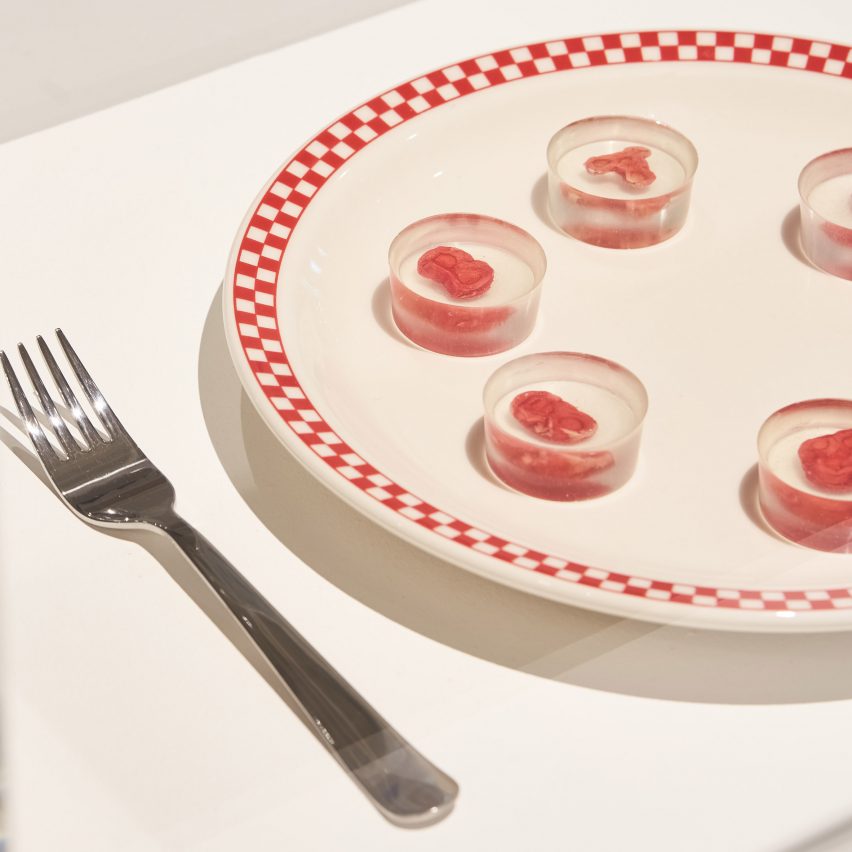
A group of American scientists and designers have developed a concept for a grow-your-own steak kit using human cells and blood to question the ethics of the cultured meat industry.
Ouroboros Steak could be grown by the diner at home using their own cells, which are harvested from the inside of their cheek and fed a serum of expired, donated human blood.
The resulting bite-sized pieces of meat, currently on display as prototypes at the Beazley Designs of the Year exhibition, are created entirely without causing harm to animals. The creators argued this cannot be said about the growing selection of cultured meat made from animal cells.
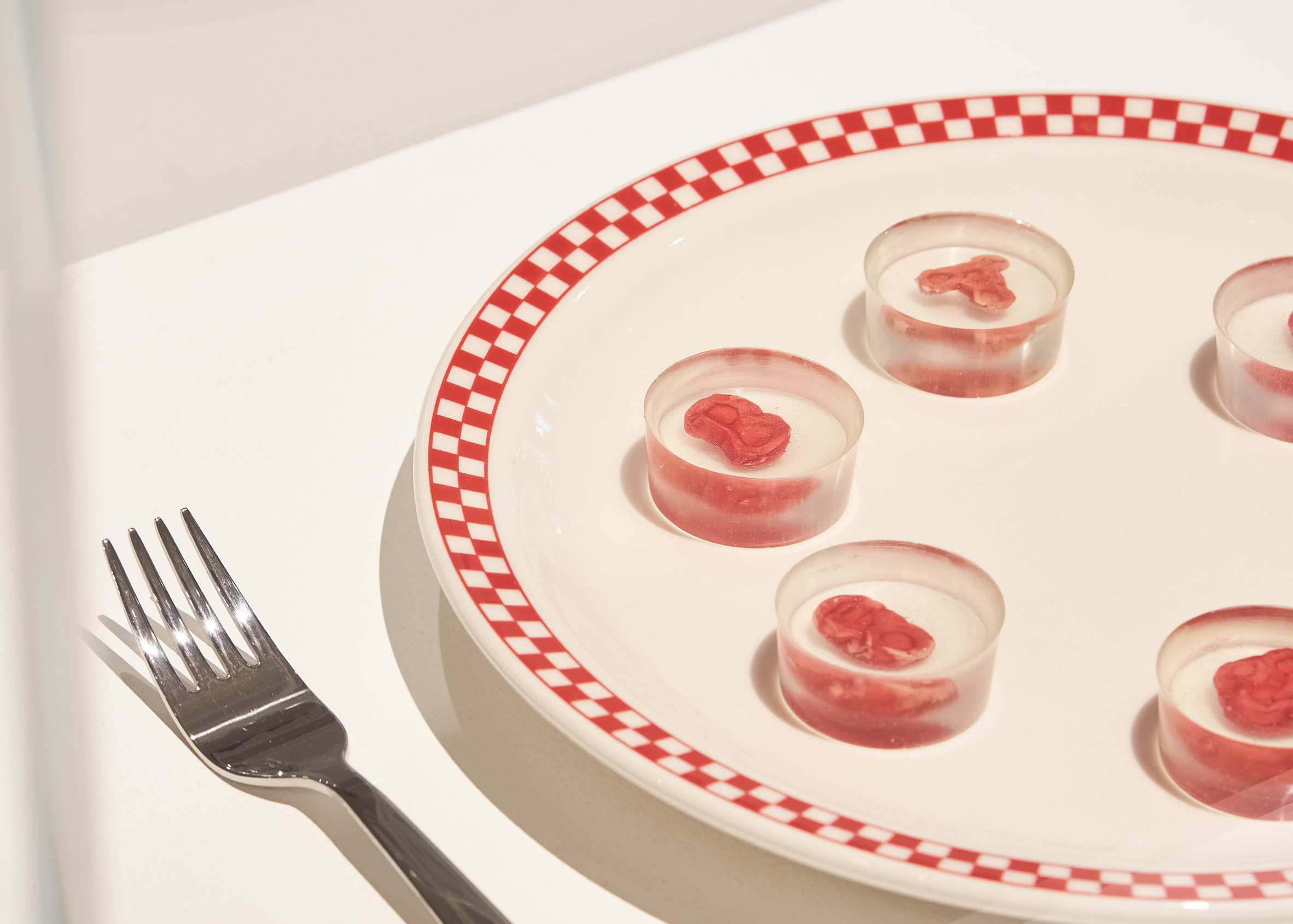
Despite the lab-grown meat industry claiming to offer a more sustainable, cruelty-free alternative to factory farming, the process still relies on fetal bovine serum (FBS) as a protein-rich growth supplement for animal cell cultures.
FBS, which costs around £300 to £700 per litre, is derived from the blood of calf fetuses after their pregnant mothers are slaughtered by the meat or dairy industry. So lab-grown meat remains a byproduct of polluting agricultural practices, much like regular meat.
"Fetal bovine serum costs significant amounts of money and the lives of animals," said scientist Andrew Pelling, who developed the Ouroboros Steak with industrial designer Grace Knight and artist and researcher Orkan Telhan.
"Although some lab-grown meat companies are claiming to have solved this problem, to our knowledge no independent, peer-reviewed, scientific studies have validated these claims," Pelling continued.
"As the lab-grown meat industry is developing rapidly, it is important to develop designs that expose some of its underlying constraints in order to see beyond the hype."
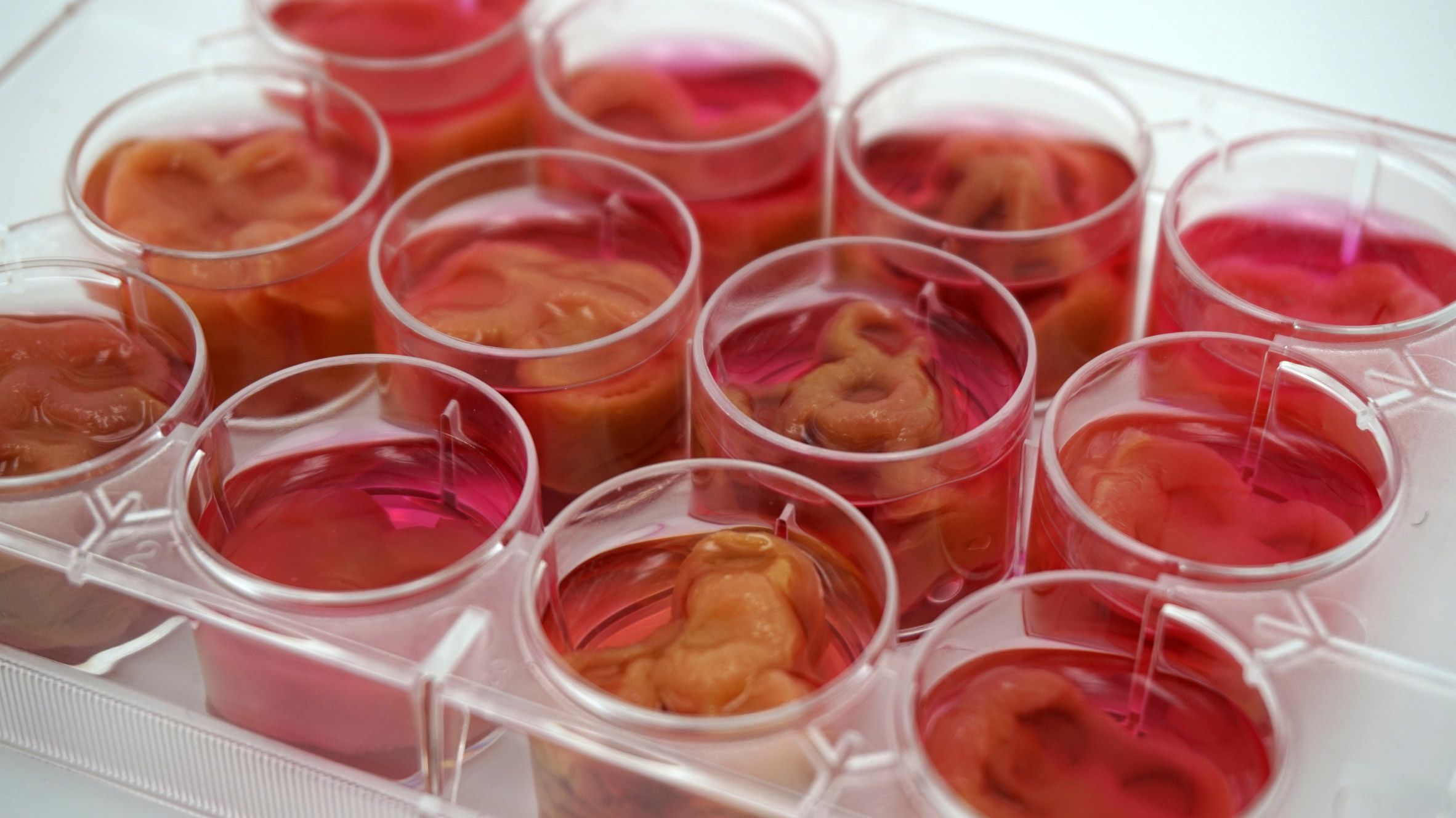
Ouroboros Steak, named after the ancient symbol of the snake eating its own tail, cuts out the need for other animals by drawing exclusively on human blood and cells.
The version on display at London's Design Museum was made using human cell cultures, which can be purchased for research and development purposes from the American Tissue Culture Collection (ATCC). They were fed with a serum derived from expired human blood donations that would otherwise have been discarded or incinerated.
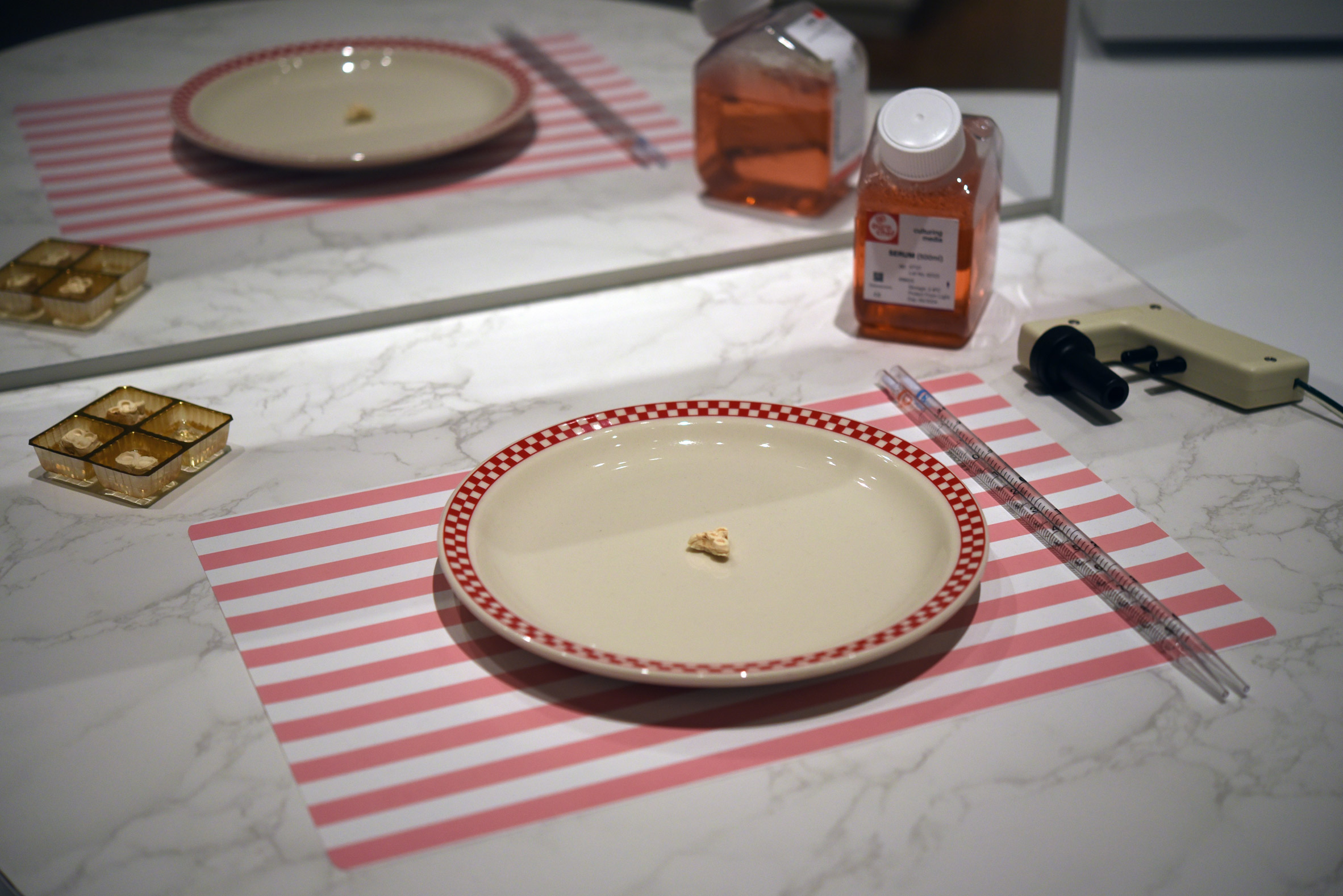
Amuse-bouche-sized steaks are preserved in resin and laid out on a plate complete with a placemat and silverware as a tongue-in-cheek nod to American diner culture.
As part of the DIY kit, the team envisions users collecting cells from the inside of their own cheek using a cotton swab and depositing them onto pre-grown scaffolds made from mushroom mycelium.
For around three months, these are stored in a warm environment such as a low-temperature oven and fed with human serum until the steak is fully grown.
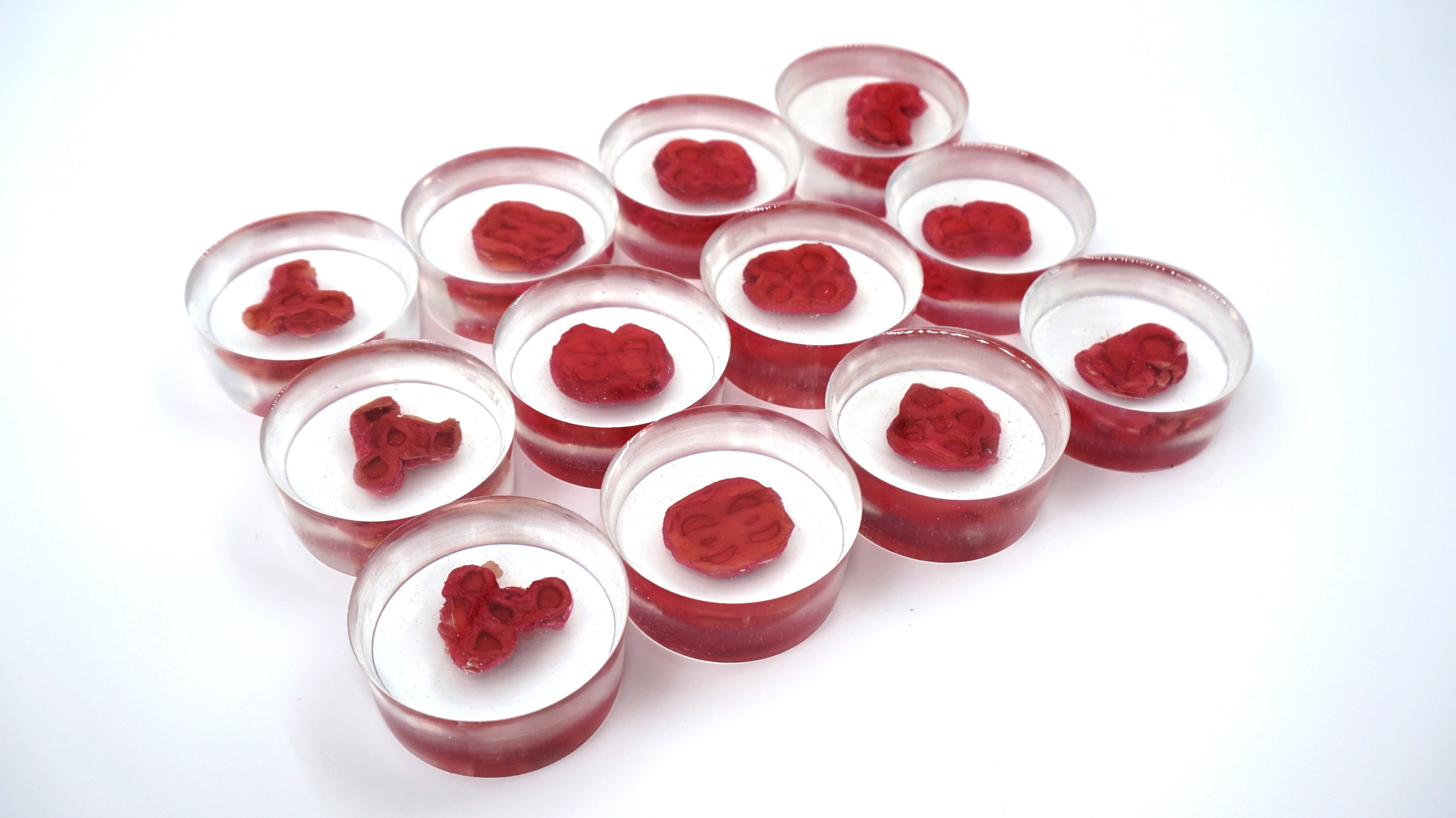
"Expired human blood is a waste material in the medical system and is cheaper and more sustainable than FBS, but culturally less-accepted. People think that eating oneself is cannibalism, which technically this is not," said Knight.
"Our design is scientifically and economically feasible but also ironic in many ways," Telhan added.
"We are not promoting 'eating ourselves' as a realistic solution that will fix humans' protein needs. We rather ask a question: what would be the sacrifices we need to make to be able to keep consuming meat at the pace that we are? In the future, who will be able to afford animal meat and who may have no other option than culturing meat from themselves?"
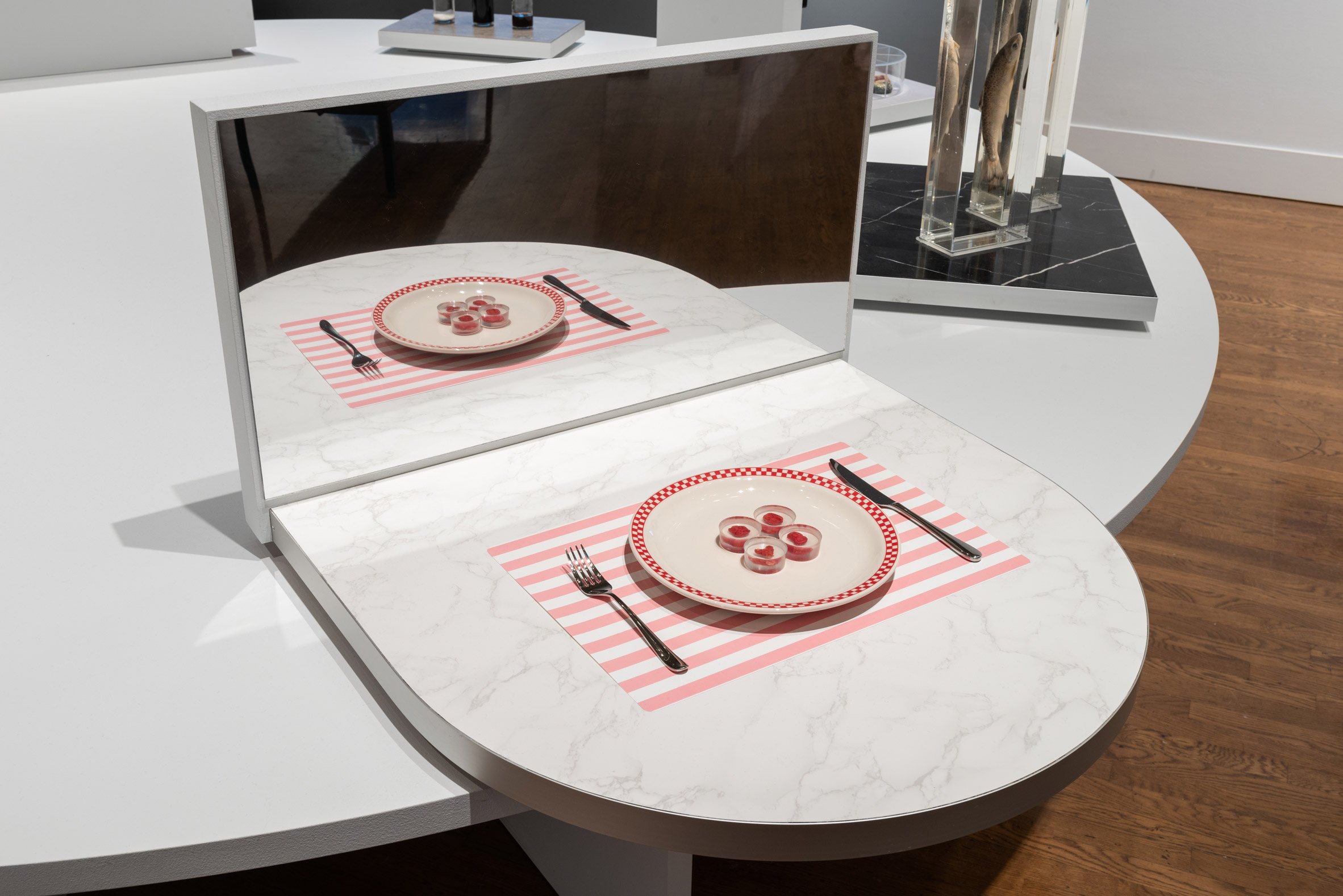
Although no lab-grown meat has so far approved for sale in any part of the world, the market is estimated to be worth $206 million and expected to grow to $572 million by 2025, largely due to the increasing environmental and ethical concerns about the mass rearing of livestock for human consumption.
Among the companies hoping to bring cultured meat to market are Aleph Farms, which claims to have been the first company to make a lab-grown steak. Others have focused on substituting meat entirely, with Novameat creating a 3D-printed steak from vegetable proteins.
The post Ouroboros Steak grow-your-own human meat kit is "technically" not cannibalism appeared first on Dezeen.
from Dezeen https://ift.tt/35ohjUl
No comments:
Post a Comment